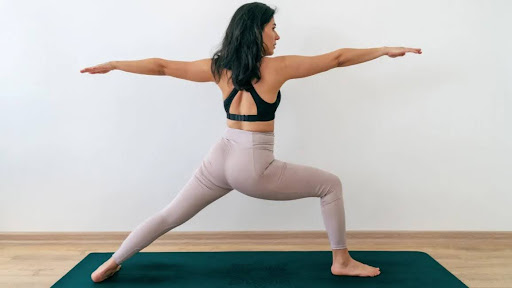Embarking on a yoga journey can be daunting for beginners. With so many poses to choose from, how do you know where to start? Look no further! Our visual guide will take you through the top yoga poses for beginners, making it easy to kick-start your practice.
Whether you’re looking to improve flexibility, build strength, or find inner peace, these poses offer a perfect starting point. With step-by-step instructions and detailed visuals, you’ll be able to perfect your form and gain confidence in no time.
From the gentle child’s pose to the energizing mountain pose, you’ll discover a variety of asanas that cater to your specific needs. Our guide is designed to be accessible to all, ensuring that you can ease into your practice without feeling overwhelmed.
So, roll out your mat, take a deep breath, and let our visual guide be your trusted companion on your yoga journey. Get ready to experience the physical, mental, and spiritual benefits of yoga, one pose at a time.
Benefits of Practicing Yoga
Yoga is much more than just a physical exercise. It offers a multitude of benefits for the mind, body, and soul. Regular practice can improve flexibility, increase strength, reduce stress, enhance focus, and promote overall well-being.
Flexibility: Yoga poses gently stretch and lengthen the muscles, improving flexibility and range of motion. As you progress in your practice, you’ll notice increased suppleness in your body.
Strength: Holding yoga poses requires strength and stability. As you build strength in your muscles, you’ll also improve your posture and protect your joints from injury.
Stress Reduction: Yoga combines movements with deep breathing and meditation, which activates the parasympathetic nervous system, promoting relaxation and reducing stress and anxiety.
Focus and Mental Clarity: Through the synchronization of breath and movement, yoga helps calm the mind and improve focus. It also enhances mental clarity, allowing you to think more clearly and make better decisions.
Overall Well-being: Regular yoga practice can improve sleep quality, boost immune function, increase energy levels, and promote a sense of inner peace and contentment.
Incorporating yoga into your daily routine can have a profound and positive impact on your physical and mental health.
Preparing for Your Yoga Practice
Before starting your yoga practice, it’s important to prepare yourself physically and mentally. Here are a few tips to help you get ready:
- Choose the Right Time: Find a time of day when you can dedicate yourself fully to your practice. Early mornings or evenings are often ideal, as they offer a calm and quiet environment.
- Create a Sacred Space: Set up a designated area in your home where you can practice without distractions. Clear the space of any clutter and make it inviting and peaceful.
- Gather Essential Yoga Props: As a beginner, it’s helpful to have a few props to support your practice. Some essential props include a yoga mat, blocks, a strap, and a bolster. These props can assist you in maintaining proper alignment and ease into more challenging poses.
- Dress Comfortably: Wear loose-fitting clothes that allow for ease of movement. Avoid wearing anything too tight or restrictive that may hinder your range of motion.
- Stay Hydrated: Drink plenty of water before and after your practice to stay hydrated. It’s important to nourish your body and support its functions throughout your yoga session.
By following these preparations, you’ll create a conducive environment for your yoga practice and set yourself up for a rewarding experience.
Essential Yoga Props for Beginners
As a beginner, having the right yoga props can greatly enhance your practice. Here are some essential props to consider:
- Yoga Mat: A good-quality yoga mat provides stability and cushioning for your practice. Look for a mat that offers a non-slip surface and adequate thickness for your comfort.
- Blocks: Yoga blocks are versatile props that provide support and stability. They can be used to modify poses, improve alignment, and increase flexibility.
- Strap: A yoga strap helps you reach deeper into poses and improve flexibility. It can be particularly useful for stretches that require a greater range of motion.
- Bolster: A bolster is a firm cushion that supports your body during restorative poses. It helps you relax and release tension, allowing for a deeper sense of relaxation.
Investing in these essential props will enhance your practice and make it more enjoyable and effective.
Basic Yoga Poses for Beginners
As a beginner, starting with basic yoga poses will lay a strong foundation for your practice. Here are some fundamental poses to get you started:
- Child’s Pose (Balasana): This gentle resting pose stretches the back, hips, and thighs. It helps calm the mind and relieves stress and fatigue.
- Downward Facing Dog (Adho Mukha Svanasana): This pose strengthens the arms, shoulders, and core while lengthening the hamstrings and calves. It also helps improve posture and energizes the body.
- Mountain Pose (Tadasana): This standing pose promotes good posture and improves balance. It also helps increase body awareness and focus.
- Tree Pose (Vrikshasana): This balance pose strengthens the legs and ankles while improving concentration and stability. It also helps develop a sense of groundedness.
- Warrior I (Virabhadrasana I): This pose strengthens the legs and opens the hips, chest, and shoulders. It builds stamina and cultivates a sense of inner strength.
Practice these basic poses with proper alignment and focus, gradually moving on to more advanced poses as you gain confidence and strength.
Standing Yoga Poses for Beginners
Standing yoga poses not only build strength and improve balance but also help develop a strong connection between the body and mind. Here are some standing poses suitable for beginners:
- Warrior II (Virabhadrasana II): This pose strengthens the legs, opens the hips, and stretches the groin. It also improves focus and concentration.
- Triangle Pose (Trikonasana): This pose stretches the hamstrings, hips, and shoulders while strengthening the legs and core. It also improves digestion and stimulates the abdominal organs.
- Extended Side Angle Pose (Utthita Parsvakonasana): This pose strengthens the legs, opens the hips, and stretches the side body. It also improves balance and cultivates a sense of expansion.
- Chair Pose (Utkatasana): This pose strengthens the legs, core, and back muscles. It also improves posture and increases stamina.
Practice these standing poses mindfully, paying attention to proper alignment and breathing. As you become more comfortable, you can explore variations and deepen your practice.
Seated Yoga Poses for Beginners
Seated yoga poses are excellent for improving flexibility, calming the mind, and cultivating a sense of inner peace. Here on oppatoto are some seated poses suitable for beginners:
- Easy Pose (Sukhasana): This simple cross-legged pose promotes a relaxed and grounded state of mind. It helps improve posture and hip flexibility.
- Seated Forward Bend (Paschimottanasana): This pose stretches the entire back body, including the hamstrings and spine. It also calms the mind and relieves anxiety.
- Bound Angle Pose (Baddha Konasana): This pose opens the hips and groin while stretching the inner thighs and lower back. It also stimulates the abdominal organs and promotes blood circulation.
- Seated Twist (Ardha Matsyendrasana): This pose improves spinal mobility and stretches the back muscles. It also aids digestion and detoxification.
Practice these seated poses with awareness and focus, allowing yourself to surrender into each posture. Remember to breathe deeply and listen to your body’s needs.
Supine Yoga Poses for Beginners
Supine yoga poses are performed lying on your back and offer deep relaxation and rejuvenation. Here are some supine poses suitable for beginners:
- Corpse Pose (Savasana): This final relaxation pose allows the body and mind to fully relax and integrate the benefits of your practice. It reduces stress and promotes a deep sense of calm.
- Bridge Pose (Setu Bandhasana): This pose strengthens the back, buttocks, and legs while opening the chest and shoulders. It also stimulates the thyroid and improves digestion.
- Legs-Up-The-Wall Pose (Viparita Karani): This restorative pose helps reduce swelling in the legs, improves circulation, and calms the nervous system. It also relieves lower back pain and aids in relaxation.
- Supine Spinal Twist (Supta Matsyendrasana): This pose releases tension in the spine, hips, and shoulders. It also improves digestion and detoxification.
Practice these supine poses in a quiet and comfortable space, allowing your body to release any tension and fully surrender to relaxation.
Closing Your Yoga Practice
After completing your yoga practice, it’s important to close with a few minutes of relaxation and reflection. Here’s a simple closing sequence to help you wind down:
- Corpse Pose (Savasana): Lie on your back, close your eyes, and allow your body to completely relax. Focus on your breath and let go of any tension or thoughts.
- Gratitude Practice: Take a moment to express gratitude for your practice and for the opportunity to nurture your mind, body, and soul.
- Set an Intention: Set a positive intention for the rest of your day or for the upcoming week. It could be a simple affirmation or a specific goal you’d like to achieve.
- Seal your Practice: Bring your hands to your heart center, bow your head, and silently thank yourself for showing up on your mat and dedicating time to your well-being.
Take these closing moments as an opportunity to integrate the benefits of your practice and carry them with you throughout your day.
Next Steps in Your Yoga Journey
Congratulations on completing your visual guide to the top yoga poses for beginners! By incorporating these poses into your practice, you’ve taken the first step towards a healthier, more balanced lifestyle. Remember to approach your practice with patience and self-compassion, allowing yourself to grow and evolve at your own pace.
As you continue your yoga journey, explore different styles of yoga, attend classes, and seek guidance from experienced teachers. Embrace the physical, mental, and spiritual benefits that yoga has to offer, and most importantly, enjoy the process.
So, whether you’re looking to find inner peace, improve flexibility, or simply add a new dimension to your fitness routine, let yoga be your guide. From the comfort of your own mat, you have the power to transform your mind, body, and soul. Namaste.








